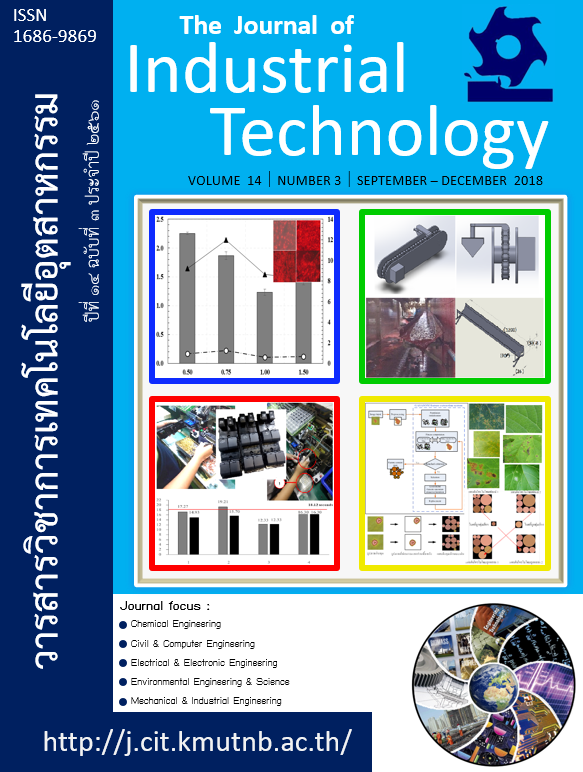Study of Ergonomic Risks of Maize Farmers in Lampang, Thailand
Keywords:
Ergonomics, Risk assessment, Maize farmers, Working conditionsAbstract
Maize farmers are agricultural workers who are at risk due to their working conditions—especially, ergonomic problems that result in long-term health complications. The purpose of this study was to assess the ergonomic risks among the maize farmers in the Mueang Pan district, Lampang province. Purposive sampling was used to select 320 participants. This research used measures such as RULA techniques and questionnaires about health hazards and working conditions. The result showed a mean score of 7, using RULA techniques. It indicated that the ergonomic problems are concerning and need improvement urgently. In regard to pain, the study found that about 44.1% of maize farmers reported pain in their lower back and 39.1% on their hands. The analysis of the correlation between personal factors and body pain showed that age and experience of participants were significantly correlated with body pain (p<0.01). The results suggested that maize farmers have high ergonomic risks. Stakeholders should seek solutions and cooperate to improve the working environment, encourage proper work behaviours, reduce ergonomic risk factors, and improve the living standard of maize farmers
References
[2] Office of Agricultural Economics, “Agricultural statistics of Thailand 2015”, Ministry for Agriculture and Cooperatives, Bangkok, 2015. (in Thai)
[3] P. Rajendran and G.L. Reddy, “Ergonomics in Agricultural Education”, Cognitive Discourses International Multidisicplinary Journal 1(1), 2013, pp. 4-13.
[4] National Statistics Office, “The informal employment survey 2016”, Available: http:// service.nso.go.th/ nso/ nsopublish/ themes/ files /workerOutReport59.pdf, 01 February 2018. (in Thai)
[5] C. Chanprasit and T. Kaewthummanukul, “Occupational health hazards, work-related illness and injury, work behaviors among informal workforce: case study in baby corn planting farmer group”, The Public Health Journal of Burapha University 5(2), 2010, pp. 40-50. (in Thai)
[6] R.V. Krejicie and D.W. Morgan, “Determining sample size for research activities”, Educational and Psychological Measurement 30, 1970, pp. 607-610.
[7] I. Kuorinka, B. Jonsson, A. Kilbom, H. Vinterberg, F. Biering-Sorensen, G. Andersson and K. Jorgensen, “Standardized nordic questionnaire for the analysis of musculoskeletal symptoms”, Applied Ergonomics 18(3), 1987, pp. 233-237.
[8] L. McAtamney and E.N. Corlett, “RULA: A survey method for the investigation of work-related upper limb disorders”, The Journal Applied Ergonomics 24(2), 1993, pp. 91-99.
[9] R. Joomjee, O. Bureelerd, N. Songserm and C. Theppitak, “The study of ergonomics management for reduce musculoskeletal symptoms among the para-rubber farmer”, Journal of Industrial Technology Ubon Ratchathani Rajabhat University 7(1), 2017, pp. 92-105. (in Thai)
[10] N. Bensa-ard, P. Tuntiseranee and S. Anuntaseree, “Work conditions and prevalence of musculoskeletal pain among para-rubber planters: a case study in Tambon Nakleua, Kantang District, Trang Province”, The Songklanagarin Medical Journal 22(2), 2004, pp. 101-110. (in Thai)
[11] A. Osborne, G. Finnegan, C. Blake, D. Meredith, J. McNamara, J. Phelan and C. Cunningham, “An evaluation of low back pain among farmers in Ireland”, Occupational Medicine 63(1), 2013, pp. 53–59.
[12] A. Osborne, C. Blake, D. Meredith, J. McNamara, J. Phelan and C. Cunningham, “The lived experience of low back pain among Lrish farmers: case studies”, Journal of Agromedicine 19(2), 2014, pp. 181–190.
[13] K.G. Davis and S.E. Kotowski, “Understanding the ergonomics risk for musculoskeletal disorders in the United States Agricultural Sector”, American Journal of Industrial Medicine 50(7), 2007, pp. 501–511.
[14] J. Jantra, C. Thanomchart, P. Sakdumrongkul, W. Deewiset, A. Intasiri, A. Sing and P. Meepradit, “The factors related with the fatigue among beauty salon workers in Seansuk municipality, Chonburi Province”, Proceedings of the Thailand National Ergonomics Conference, Bangkok, Thailand, 2016, pp. 1-11. (in Thai)
[15] J. Teerachitkul, K. Naka and P. Boonphadh, “Management of muscular aches and pains in old-age rubber tappers”, Thai Journal of Nursing Council 27(2), 2012, pp. 134-147. (in Thai)
[16] Ergonomics Plus, “A step-by-step guide rapid upper limb assessment (RULA)”, Available : http://ergo-plus.com/wp-content/uploads/ RULA-A-Step-by-Step-Guide1.pdf, 8 February 2018.
[17] N. A. Ansari and M. J. Sheikh, “Evaluation of work posture by RULA and REBA: A case study”, Journal of Mechanical and Civil Engineering 11(4), 2014, pp. 18–23.
[18] L. McAtamney and E.N. Corlett, “Rapid upper limb assessment (RULA) handbook of human factors and ergonomics methods”, CRC Press, 2004.
[19] W. Madtharak, “Working loss reduction of para rubber plantation farmers using ergonomics assessment: a case study in Manung district, Stun province area”, The Journal of Industrial Technology 14(1), 2018, pp. 13-21. (in Thai)


